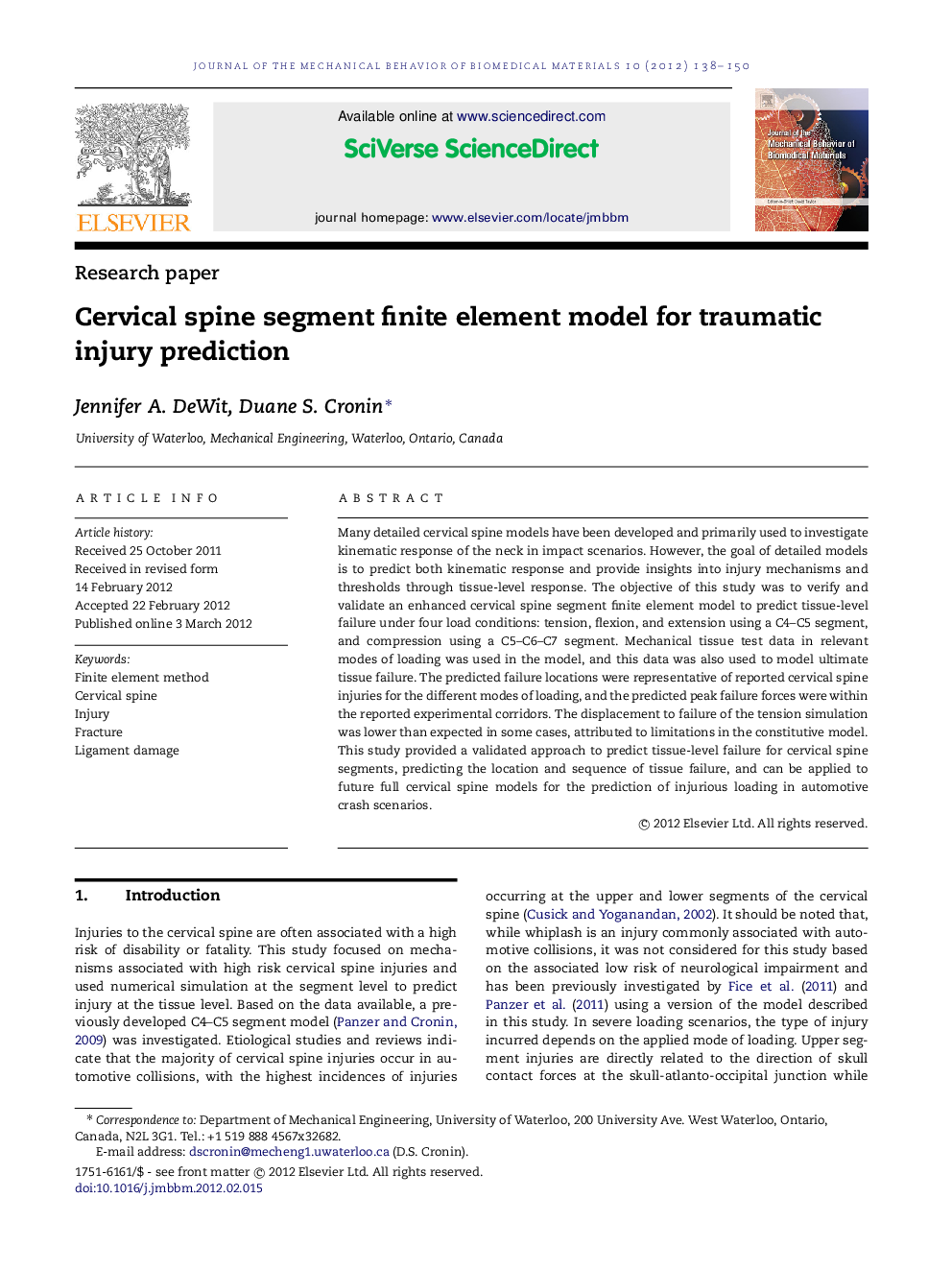| Article ID | Journal | Published Year | Pages | File Type |
|---|---|---|---|---|
| 811054 | Journal of the Mechanical Behavior of Biomedical Materials | 2012 | 13 Pages |
Many detailed cervical spine models have been developed and primarily used to investigate kinematic response of the neck in impact scenarios. However, the goal of detailed models is to predict both kinematic response and provide insights into injury mechanisms and thresholds through tissue-level response. The objective of this study was to verify and validate an enhanced cervical spine segment finite element model to predict tissue-level failure under four load conditions: tension, flexion, and extension using a C4–C5 segment, and compression using a C5–C6–C7 segment. Mechanical tissue test data in relevant modes of loading was used in the model, and this data was also used to model ultimate tissue failure. The predicted failure locations were representative of reported cervical spine injuries for the different modes of loading, and the predicted peak failure forces were within the reported experimental corridors. The displacement to failure of the tension simulation was lower than expected in some cases, attributed to limitations in the constitutive model. This study provided a validated approach to predict tissue-level failure for cervical spine segments, predicting the location and sequence of tissue failure, and can be applied to future full cervical spine models for the prediction of injurious loading in automotive crash scenarios.
